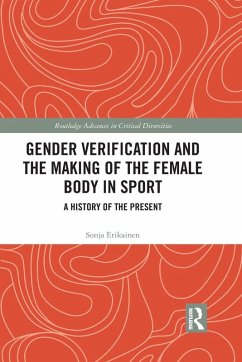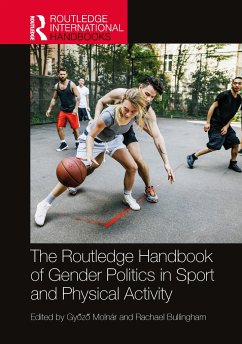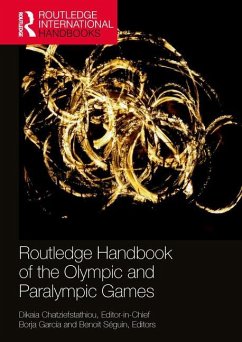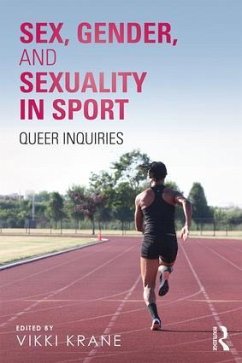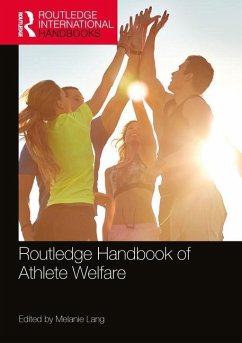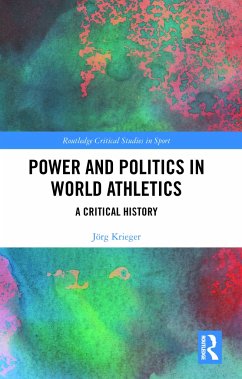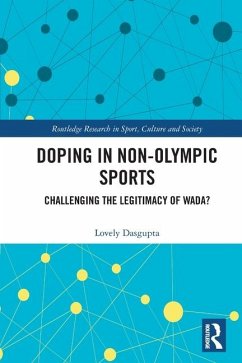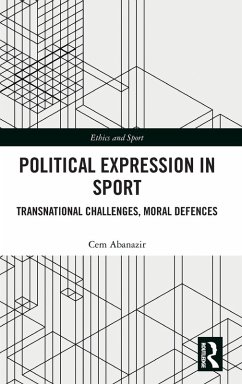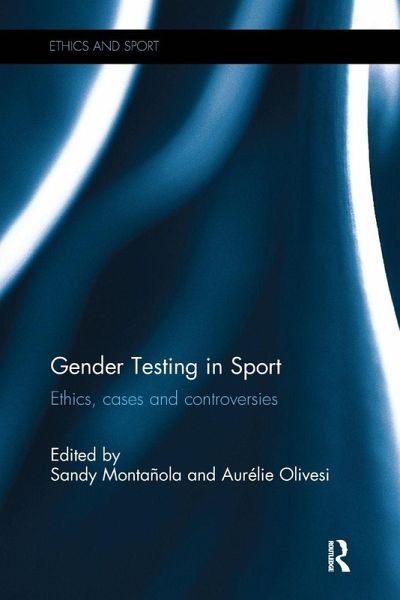
Gender Testing in Sport
Ethics, cases and controversies
Herausgegeben: Montanola, Sandy; Olivesi, Aurélie

PAYBACK Punkte
27 °P sammeln!
After the young South African athlete Caster Semenya won the 800m title at the 2009 World Championships she was obliged to undergo gender testing and was temporarily withdrawn from international competition. The way that this controversy unfolded represents a rich and multi-layered example of the construction of gender in wider society and the interrelationships between sport, culture and the media. This is the first book to explore the case in depth, from socio-cultural, ethical and legal perspectives.Analysing what came to be called "the Caster Semenya Case" in a comprehensive and multi-disc...
After the young South African athlete Caster Semenya won the 800m title at the 2009 World Championships she was obliged to undergo gender testing and was temporarily withdrawn from international competition. The way that this controversy unfolded represents a rich and multi-layered example of the construction of gender in wider society and the interrelationships between sport, culture and the media. This is the first book to explore the case in depth, from socio-cultural, ethical and legal perspectives.
Analysing what came to be called "the Caster Semenya Case" in a comprehensive and multi-disciplinary fashion, and covering issues from media discourses and the rhetoric and regulations of the sport's governing bodies to the reaction of the athlete herself, the book explores the ethics of how gender norms in sport, and in society more generally, are constructed through appearance, behaviour and sporting performance. This 2009 controversy can be taken as an indicator of the tensions of the time, and served as a link between medical sciences, society and gender.
Including discussions of key concepts such as 'intersex', 'body norms', and 'fairness', Gender Testing in Sport is fascinating and important reading for anybody with an interest in sport studies, gender studies or biomedical ethics.
Analysing what came to be called "the Caster Semenya Case" in a comprehensive and multi-disciplinary fashion, and covering issues from media discourses and the rhetoric and regulations of the sport's governing bodies to the reaction of the athlete herself, the book explores the ethics of how gender norms in sport, and in society more generally, are constructed through appearance, behaviour and sporting performance. This 2009 controversy can be taken as an indicator of the tensions of the time, and served as a link between medical sciences, society and gender.
Including discussions of key concepts such as 'intersex', 'body norms', and 'fairness', Gender Testing in Sport is fascinating and important reading for anybody with an interest in sport studies, gender studies or biomedical ethics.





